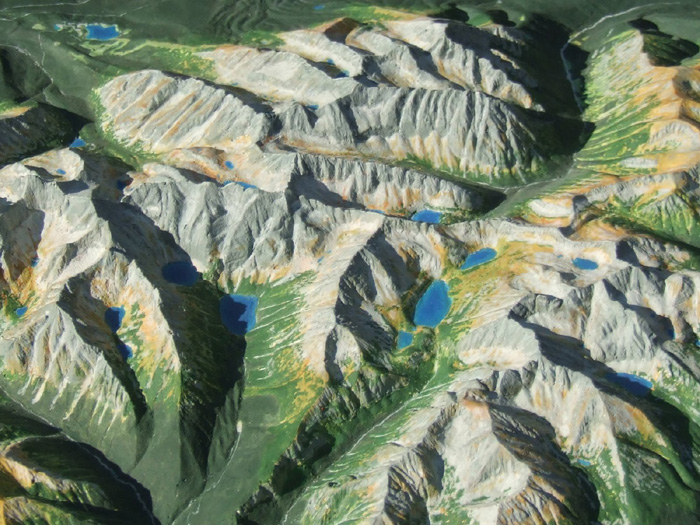The Raised Relief Map Draft
For short stories and even novellas, I have begun drafting in a new way. I always try to read over and organize my notes and put them in a single digital file, but I've begun to do this in a more formal and disciplined way. It is certainly a part of the process of writing, but it feels different from writing to me. It is primarily left brain work that doesn't sink into the creative depths.
That not-sinking into the deepest creative place is the discipline. Rather, I try to get the material tidied into piles first. I scrape any notes I have into digital heaps and shove them around so that I have a little landscape of homemade hills. I often give the piles temporary names: The Book Club; Bobby One; The Psychiatrist; Bobby Two. I use the heaps of material as a genre writer uses the standard genre format or as a biographer uses the chronology of a life. The form is not a choke collar or a cage, but a landscape to explore.
One I have the heaps, after I've laid it aside for a while, I come back and write from the beginning, letting one thing lead to another, letting myself sink into the scenes and ideas and sensations. This is not the same as a clean start, something I recommend when there seems to be too much material to revise. In a clean start, you start the beginning with an empty screen or blank sheet of paper. Having no notes in front of you allows your mind to bring back only the best parts, and you usually get a leaner, cleaner, altogether better draft.
The raised relief map technique groups the materials as a structure, as a map. You can make side trips, stop to smell the flowers. You can be surprised by what is hiding in a cave or an old mine shaft. You can excavate or wander off, usually to come back to the path, or at least to sight of it.
This technique is pretty straightforward with a short story or even a long story or essay, because I usually only have maybe half a dozen of the heaps of ideas and materials. It is more challenging, or at the very least more time-consuming, with a novel. Need I reiterate that this is something to play off of, not get stuck in? The plan may change radically before you're done, but for the moment, you have (1) an excellent way to see what you have, the lay of the land; (2) a direction and at least a hypothetical structure; and (3) lots of material to explore--and explode.

No comments:
Post a Comment